Key takeaways:
- Selective mutism is a complex anxiety disorder primarily affecting children, often triggered by social situations.
- Practicing conversations in safe environments and using role-playing techniques significantly boost confidence and reduce anxiety.
- Creating a supportive and trusting atmosphere, including allowing for pauses in dialogue, is essential for individuals with selective mutism.
- Resources like support groups, online forums, and communication skills literature can aid in ongoing practice and improvement of conversational abilities.

Understanding Selective Mutism
Selective mutism is a complex anxiety disorder often seen in children, where they are unable to speak in specific social situations despite being able to communicate comfortably in others, like at home. I remember feeling a wave of relief when I discovered that others shared similar struggles of wanting to speak but feeling engulfed by an invisible barrier in social settings.
It’s crucial to understand that selective mutism isn’t simply stubbornness or shyness; it’s an overwhelming fear of speaking that can lead to isolation and frustration for both the child and their family. Have you ever thought about how isolating it must feel to have thoughts and words trapped inside, unable to break free? This experience can create a profound emotional burden, erasing the joy of interactions that many take for granted.
The condition typically surfaces before the age of five, coinciding with significant life changes such as starting school. I’ve seen how these shifts can heighten anxiety, and it makes me wonder, how can we better support these children during such vulnerable transitions? Understanding this disorder is the first step in fostering a compassionate environment where communication can slowly flourish.
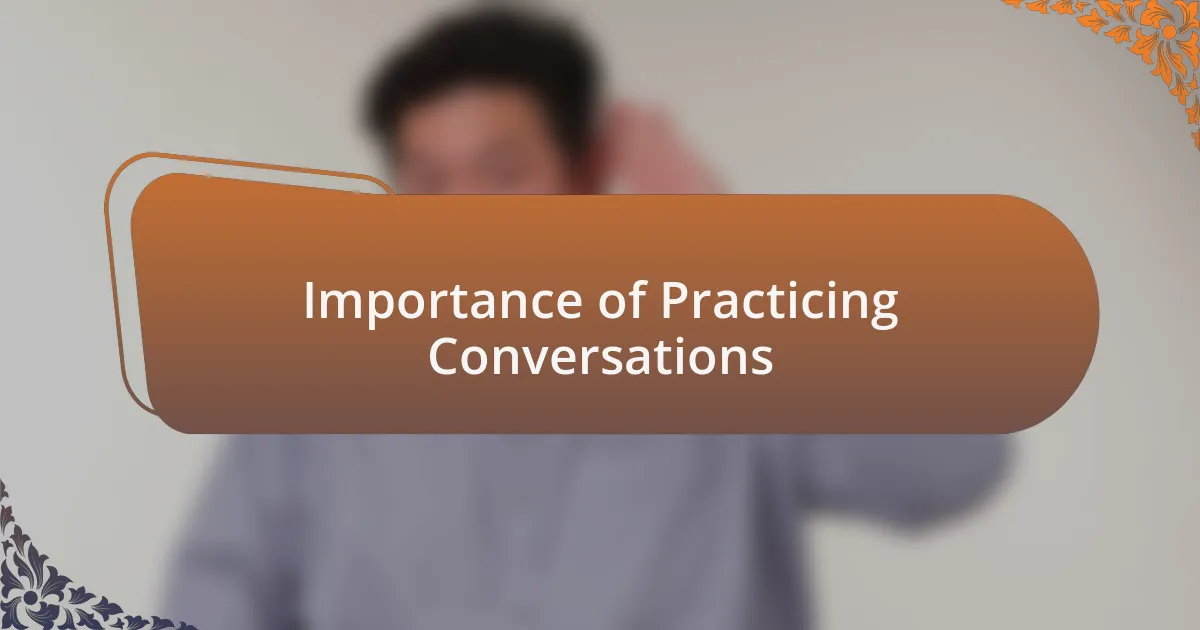
Importance of Practicing Conversations
Practicing conversations is vital for anyone grappling with selective mutism. In my experience, engaging in regular dialogue, even in a safe space, helps build confidence and decreases anxiety. Have you ever noticed how familiar voices can create a cocoon of comfort that makes it easier to express thoughts?
One technique that I found beneficial was role-playing different social scenarios, allowing me to prepare for real-life interactions. It’s incredible how rehearsing a simple exchange, like ordering food or greeting a classmate, made me feel empowered. I vividly remember the first time I ordered my coffee—my heart raced, yet the practice gave me that extra push to break through my fears.
Moreover, conversing with trusted friends or family can provide an invaluable support system. These conversations should be pressure-free, nurturing an environment where mistakes are not only accepted but welcomed. Reflecting on this, I often think, how much less daunting would social settings become if practicing conversations were a routine part of our lives?
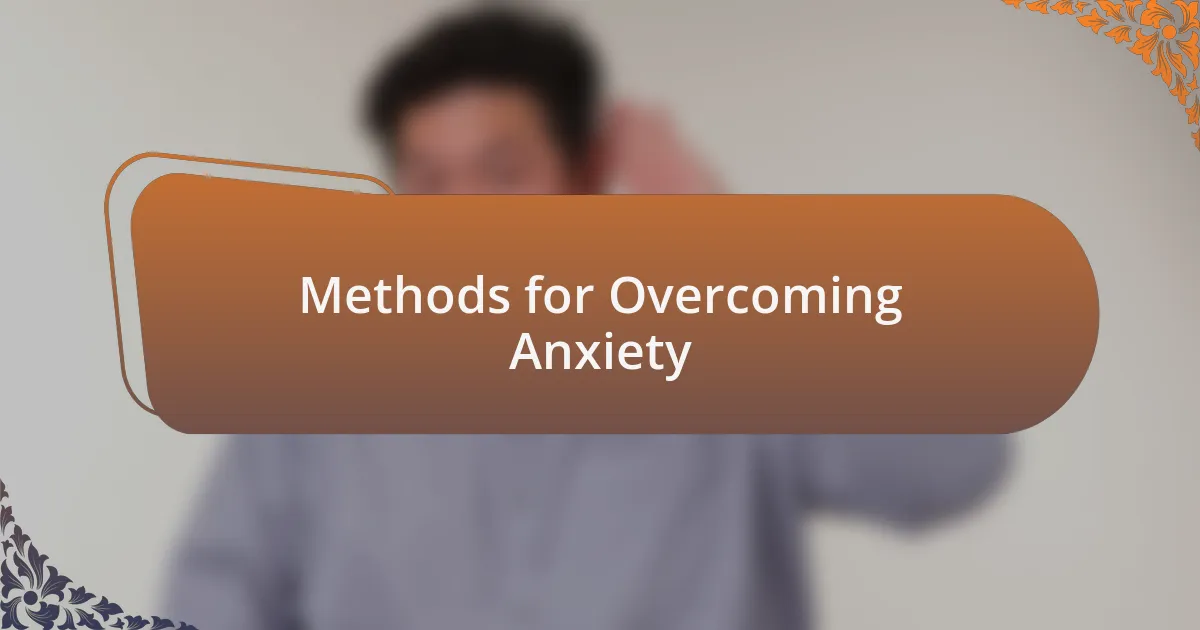
Methods for Overcoming Anxiety
One effective method for overcoming anxiety is gradually exposing oneself to social situations. I remember attending a small gathering where I initially felt overwhelmed. I set a personal goal to speak to at least one person—just one! After mustering the courage to introduce myself, I realized that the other person was just as eager to connect. Have you ever experienced that moment when fear transforms into relief?
Mindfulness techniques are another powerful tool I advocate. Through deep breathing exercises, I learned to manage my racing heart. I often find a quiet space, close my eyes, and focus on my breath, envisioning each inhale as a wave of calm and each exhale as a release of anxiety. Isn’t it fascinating how something as simple as breathing can ground us?
Lastly, journaling about my feelings surrounding social interactions has proven beneficial. Putting pen to paper allows me to process my anxiety, helping me identify triggers and patterns. I sometimes review my entries before engaging in a conversation, reminding myself of past successes. Could this reflection prepare us to face new challenges with greater resilience?
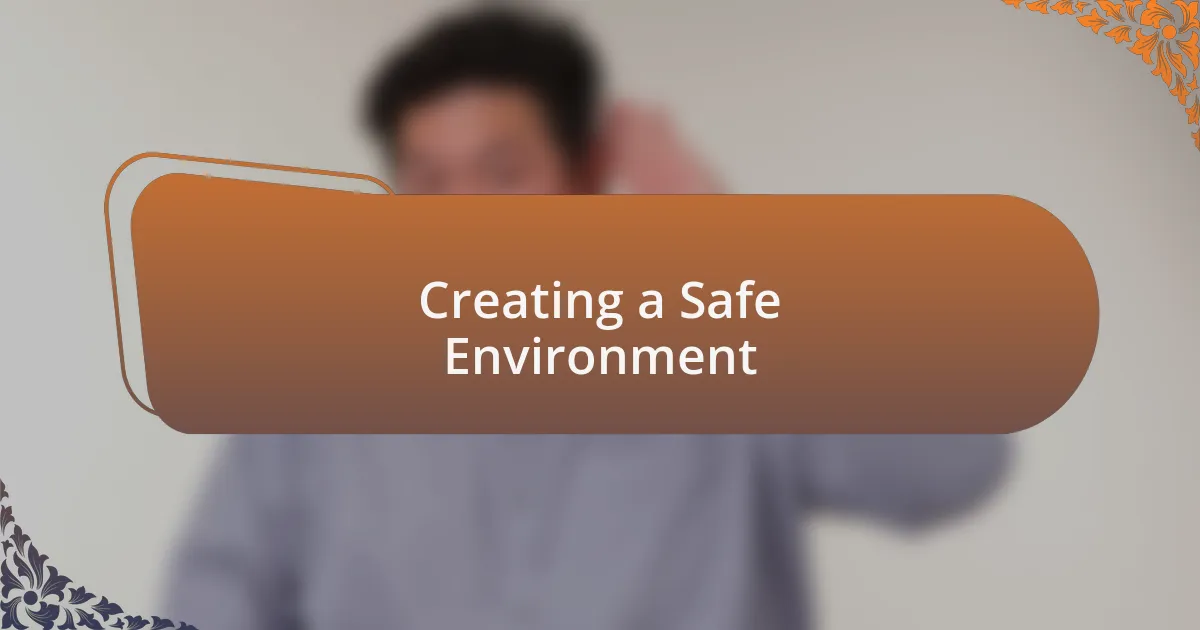
Creating a Safe Environment
Creating a safe environment plays a crucial role in easing anxiety for those with selective mutism. I vividly recall a time when I transformed my living room into a cozy conversation corner. By inviting a close friend over and ensuring the space was free of distractions, I felt a wave of comfort wash over me. Wouldn’t you agree that having a familiar setting can make all the difference?
Establishing trust is essential too. I learned that sharing my feelings openly with those closest to me encouraged them to do the same. One evening, I revealed my struggles with speaking in certain situations, which prompted a heartfelt discussion. It was incredible to feel understood and supported. Have you ever experienced that bond formed through vulnerability?
Having clear boundaries in conversations is also vital. For example, allowing pauses in dialogue can create space for processing thoughts without pressure. I’ve found that when I let my conversation partner know that it’s okay to take their time, I can engage more freely. How can small adjustments to our communication style foster a sense of safety for both parties?
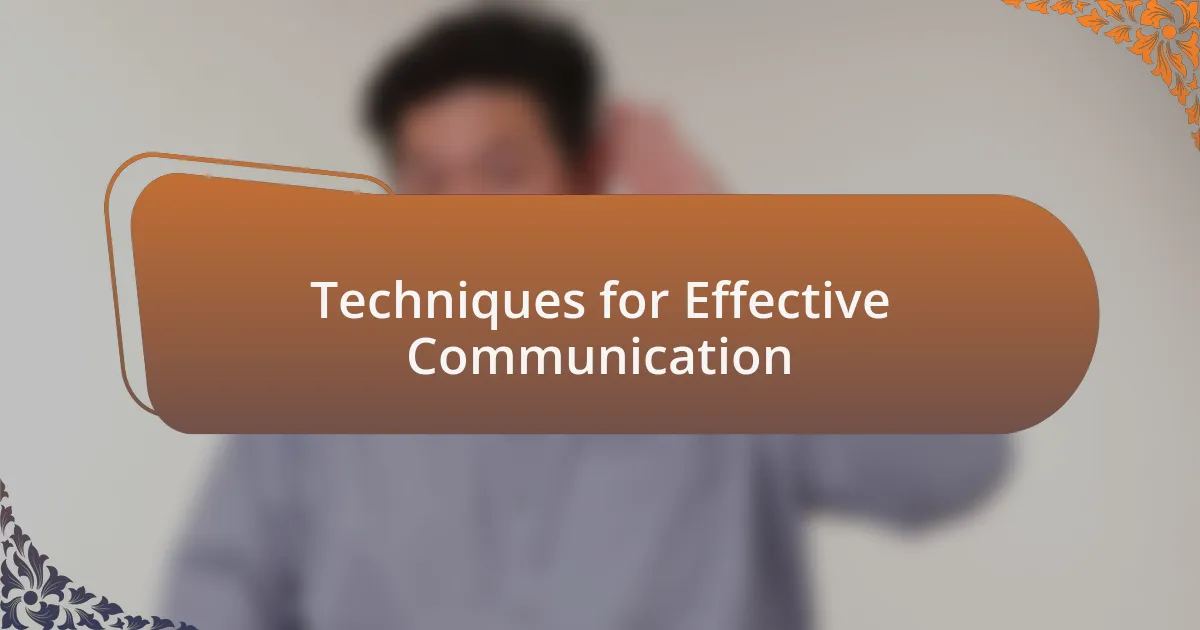
Techniques for Effective Communication
In my experience, using open-ended questions can significantly enhance communication. I remember a moment during a group activity when a facilitator asked us, “What do you enjoy doing most in your free time?” This made everyone share more than just simple answers; it encouraged deeper conversations. Have you noticed how these types of questions can invite a sense of belonging?
Non-verbal cues often speak louder than words. I recall a time when I volunteered at a local event, and a simple smile or nod from others made my anxiety melt away. This taught me that body language can bridge gaps when words are hard to find. How do you think maintaining eye contact or using reassuring gestures could help someone feel more at ease?
Practicing active listening is another technique that I’ve found invaluable. On one occasion, a friend shared their struggles, and by truly focusing on their words without interrupting, I not only made them feel heard but also learned so much more about their perspective. Isn’t it fascinating how listening can be just as impactful as speaking in creating a meaningful exchange?
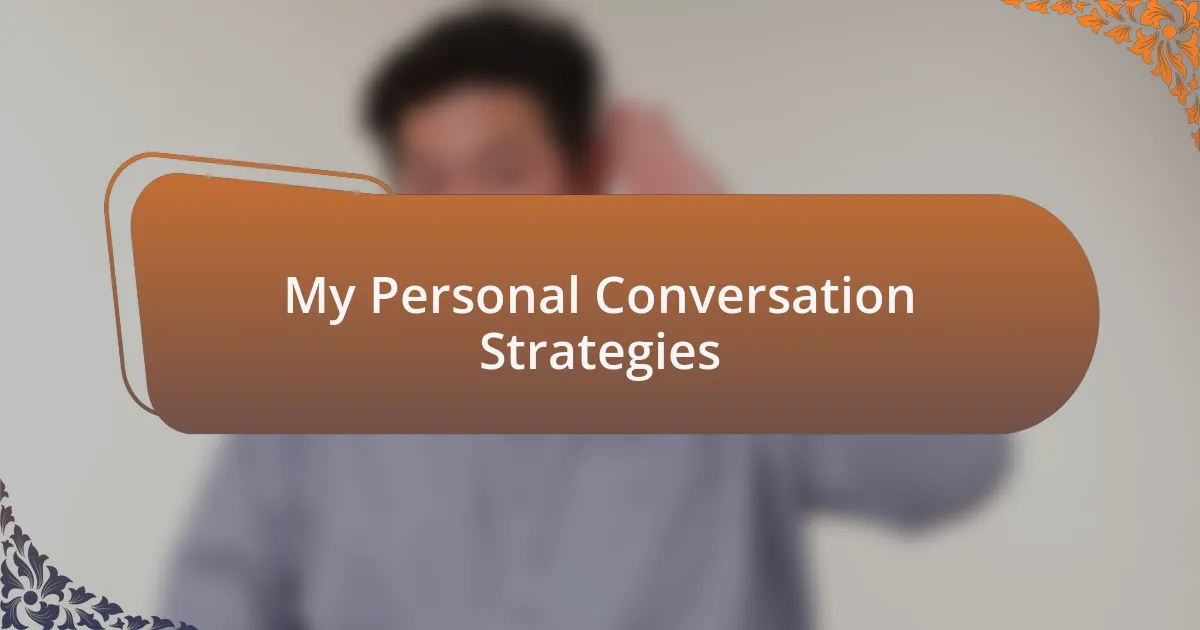
My Personal Conversation Strategies
When it comes to navigating conversations, I often rely on a “prep and practice” approach. Before a social event, I jot down a few topics that I feel comfortable discussing, like recent movies or vacations. This not only boosts my confidence but also helps me anticipate responses. Have you ever noticed how preparation can reduce the pressure of spontaneous conversation?
Another strategy I cherish is utilizing role-playing with a trusted friend. I remember spending an afternoon with a buddy, simulating various social scenarios. Practicing responses in a safe space allowed me to experiment with different ways of expressing myself. How might rehearsing conversations with someone you trust help ease your anxieties?
Sometimes, I embrace the moments of silence. I recall a gathering where I felt overwhelmed and didn’t have much to contribute. Instead of forcing words out, I took a breath and savored the pauses. This gave me a chance to gather my thoughts, and interestingly, the conversation eventually moved on without any awkwardness. Doesn’t it feel reassuring to know that silence can be okay, too?
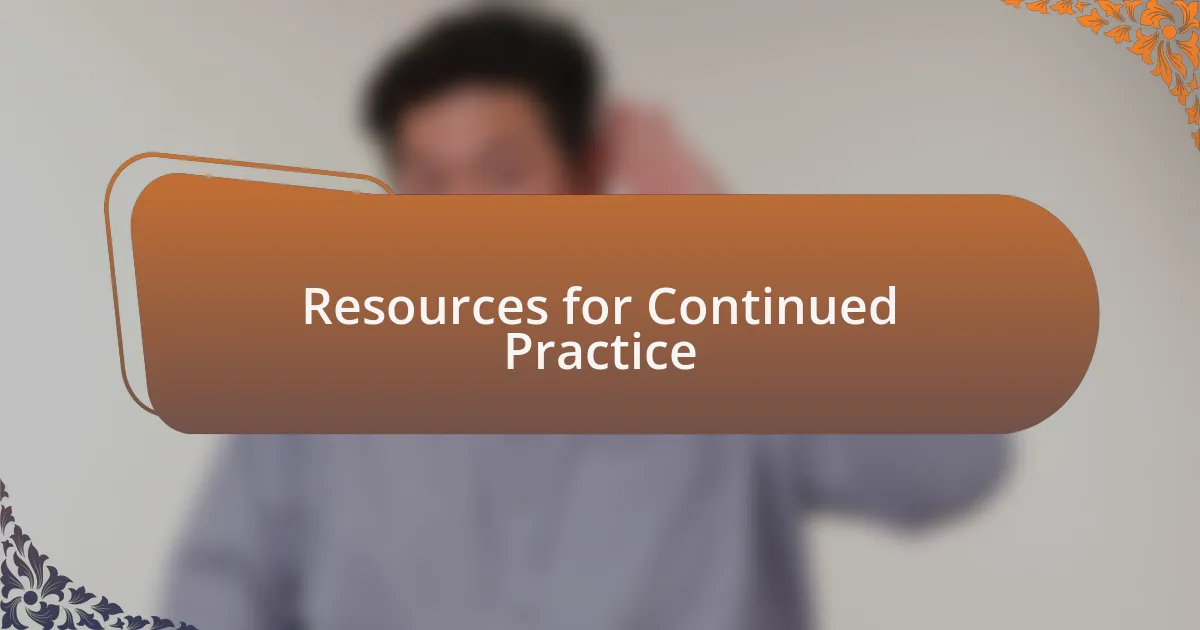
Resources for Continued Practice
When looking for resources to continue practicing conversations, I often turn to local support groups and community workshops. I vividly remember attending a session where we explored conversational techniques in a group setting. Not only did I learn new strategies, but connecting with others who share similar experiences made me feel less alone. How powerful is it to share our journeys and learn from one another?
Online platforms have also become incredibly useful for me. Websites that offer conversation practice forums or even social media groups provide a space to engage with others from the comfort of home. Once, I joined an online chat group focused on shared interests, and it felt liberating to discuss my hobbies without the pressure that face-to-face conversations sometimes bring. Have you ever found a digital community that helped lower your conversational barriers?
Books and podcasts dedicated to communication skills are invaluable companions in my practice journey. I often dive into titles that focus on active listening or storytelling techniques. After reading a book about effective communication, I felt inspired to implement new strategies during my next outing. The transformation in my approach was markedly refreshing! What resources have inspired you to enhance your conversational skills?